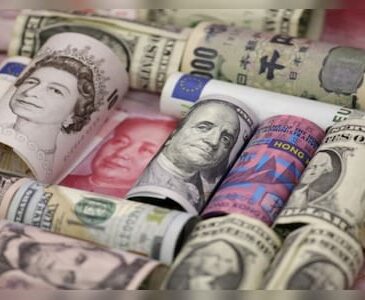
Brazil’s real and Mexico’s peso recover after Monday’s drop
Argentina’s dollar bonds fall due to concerns over dollar reserves
IMF sees steady global growth; lifts China, India forecasts
Brazil’s Lula questions need for spending cuts
Updated at 3:52 p.m. ET/ 1952 GMT
By Johann M Cherian and Shashwat Chauhan
July 16 (Reuters) –Most Latin American currencies recouped some losses on Tuesday, as investors mulled former U.S. President Donald Trump‘s possible victory in the upcoming presidential race, while Argentine dollar bonds slid as concerns rose about dollar reserves.
The currencies initially tumbled because Trump’s policies on trade, migration and security are seen as unfavorable to developing economies.
Brazil’s real BRL= appreciated 0.3%, while Mexico’s peso MXN= gained 0.5% against the dollar, after notching its biggest single-day drop in nearly three weeks on Monday.
Brazilian President Luiz Inacio Lula da Silva said he is not convinced his government needs to cut spending. He did not rule out the possibility of Brazil not complying with its fiscal target, according to extracts of an interview to be published later in the day.
Peru’s sol PEN= inched up 0.2%, while Colombia’s peso COP= dipped 0.9% as crude prices slid more than 1%. O/R
Most currencies in the region fell on Monday as investors anticipated a second term in the White House for Trump, who survived an assassination attempt over the weekend. The Republican presidential candidate selected U.S. Senator J.D. Vance to be his vice presidential running mate. Vance shares Trump’s hardline populist views.
Also supporting some bids were expectations of imminent U.S. interest rate cuts following Federal Reserve Chair Jerome Powell’s comments that the trajectory of U.S. inflation was heading to the U.S. central bank’s 2% target. USD/
Meanwhile, Argentina’s dollar-denominated bonds resumed their weekly fall with all restructured issues down over 1 cent in price, as investor concern lingers over the government’s decision to sell dollars and its effect on reserves accumulation.
Late last week, Argentina’s government said the country’s central bank will start selling U.S. dollars in the parallel foreign exchange markets to combat inflation and freeze the country’s money supply.
“While these measures are expected to narrow the gap between the parallel and official rates, there are concerns that dwindling international reserves could pose significant risks,” said Geronimo Mansutti, an economist at Tellimer Research.
Among equities, Brazil’s Bovespa stocks index .BVSP slipped 0.2%, as losses in technology and materials shares weighed.
Elsewhere, the International Monetary Fund raised its economic growth projections for the global economy in 2025 by one-tenth of a percentage point to 3.3% and bumped up its forecast for China to 4.5% from an earlier estimate of 4.1%.
The IMF also raised India’s growth forecast for 2024-2025 to 7% from 6.8% due to improving private consumption, particularly in rural parts of the South Asian nation.
Key Latin American stock indexes and currencies:
|
Latest |
Daily % change |
|
|
MSCI Emerging Markets .MSCIEF |
1118.03 |
-0.2 |
|
MSCI LatAm .MILA00000PUS |
2323.18 |
0.35 |
|
Brazil Bovespa .BVSP |
129082.63 |
-0.18 |
|
Mexico IPC .MXX |
54330.24 |
0.03 |
|
Chile IPSA .SPIPSA |
6566.38 |
0.25 |
|
Argentina MerVal .MERV |
1529928.98 |
1.657 |
|
Colombia COLCAP .COLCAP |
1374.10 |
-0.05 |
|
Currencies |
Latest |
Daily % change |
|
Brazil real BRBY |
5.4308 |
0.25 |
|
Mexico peso MXN=D2 |
17.6440 |
0.46 |
|
Chile peso CLP=CL |
907.9 |
0.00 |
|
Colombia peso COP= |
3980.31 |
-0.92 |
|
Peru sol PEN=PE |
3.6997 |
0.19 |
|
Argentina peso (interbank) ARS=RASL |
922.5000 |
0.00 |
|
Argentina peso (parallel) ARSB= |
1385 |
2.17 |
Reporting by Johann M Cherian and Shashwat Chauhan in Bengaluru; Editing by Paul Simao and Lisa Shumaker


